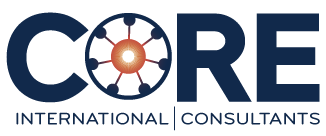I was recently asked 2 questions by a CEO, whose organization was not performing to its full potential. “What can I to do today to help my company achieves its plan faster?” “What will help me accelerate the achievement of our long term strategy?”
These questions reflect the reality that an organization’s ability to operate at a consistently high level is impacted by operational constraints. More often than not these constraints are systemic in nature and these patterns exist across the organization, and can be summarized as unclear accountability and authorities.
If managers cannot clearly articulate their own work accountabilities or how their work adds value to their direct reports, they are likely to slip into and undertake their direct reports’ work, undermining authority and causing compression. Indications of compression, which is one of the biggest causes of underperformance, are:
- Executive roles performing work with an operational rather than a strategic focus and the strategy does not get delivered.
- Ill-defined roles that result in work being duplicated or missed.
- Unclear decision-making authorities, where decisions are continually bumped up to senior levels.
These systemic problems need to be addressed holistically across the organization, and the CEO has the levers to do this by establishing an effective management system and structure. Establishing clear accountability by differentiating levels of work in the organization is the first step in creating an effective management system and the surest way to systemically address these constraints starting at the top of the house. When work is properly defined at executive levels, there is clear differentiation between the President’s work and that of the executive team. In well-structured organizations, this pattern of differentiation is repeated as accountability and authority are cascaded down—executive and general management work is clearly distinguishable from operational management work, which is clearly differentiated from that at the front line.
Questions to ask in designing an organization capable of accelerating performance:
- How many layers of management are required in the organization to deliver the strategy and how are they differentiated?
- What executive roles are required, and what should their work be? (repeated at each level)
- What level of oversight is needed to ensure delivery of the business plan is balanced against longer-term business growth?
- What management systems need to be in place to support delivery of the strategy?
Where these questions have been answered successfully results have followed. Some examples we have seen:
- Early achievement of current year plan.
- Doubling the business in three years—two years ahead of goal.
- Significant reduction in operational expenses.
- Productivity improvements in the 70% + range.
As one CEO said to us after instituting clearly defined work levels, “The results were very good. I really think we could not have moved the business forward/grown it as much as we have, without doing this (alignment) work. It freed up bottlenecks and was a good forcing mechanism to make necessary changes.”

